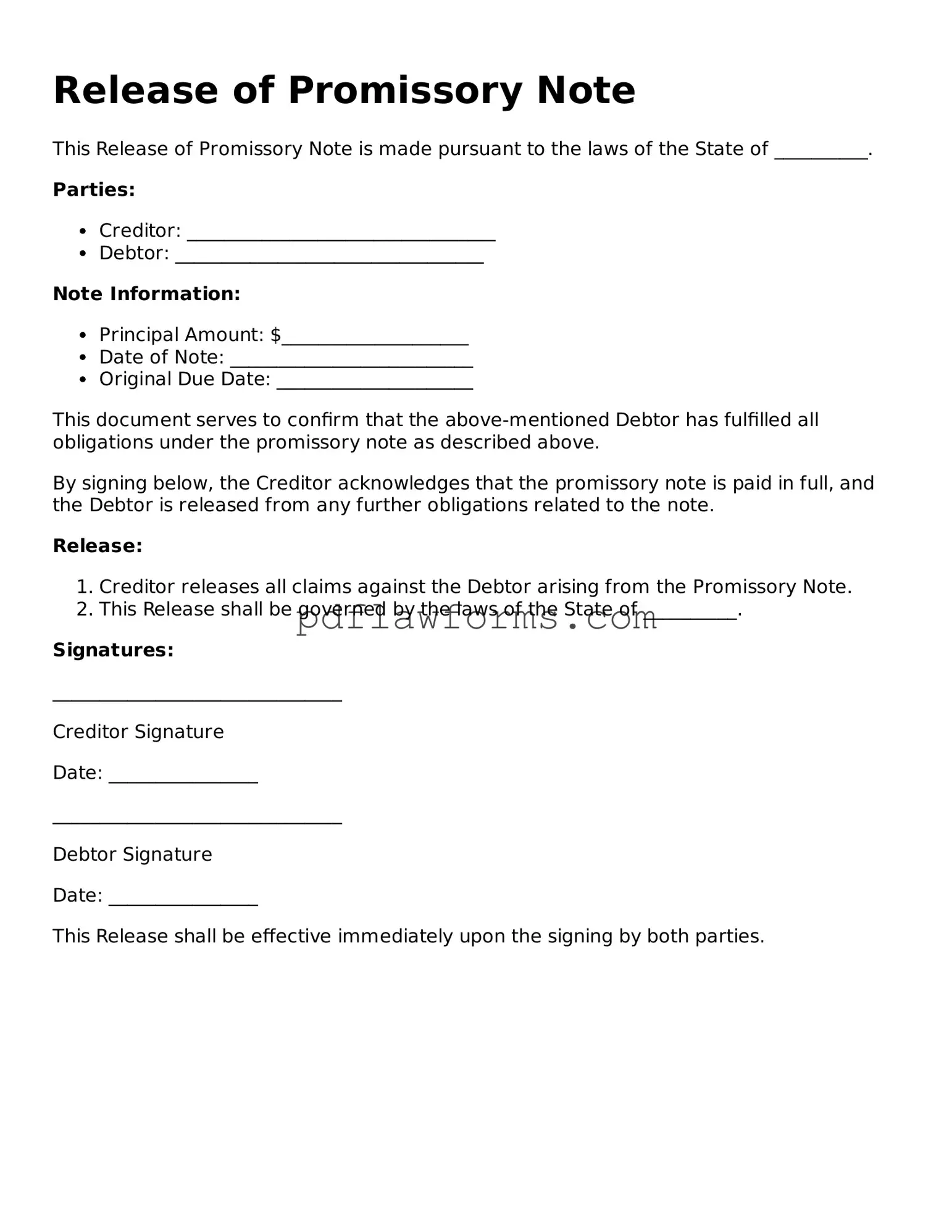Filling out the Release of Promissory Note form can be straightforward, but many people make common mistakes that can lead to complications. One frequent error is not including the correct date. It’s essential to provide the exact date when the release is signed. Missing or incorrect dates can create confusion about when the obligations were fulfilled.
Another mistake is failing to identify the parties involved clearly. Ensure that the names of both the lender and the borrower are accurate and spelled correctly. If there are any discrepancies, it could lead to issues later on, especially if either party needs to refer back to the document.
Some individuals overlook the importance of including the original promissory note number. This number helps to link the release directly to the specific note being canceled. Without it, the release may not be recognized as valid, leading to potential disputes.
Additionally, people sometimes forget to sign the form. A signature is crucial for the document to be legally binding. Even if all other information is correct, a missing signature can render the entire form ineffective.
Another common error is neglecting to have the document notarized, if required. Some jurisdictions may require a notarized signature to validate the release. Notarization adds an extra layer of authenticity and can prevent future challenges regarding the document’s legitimacy.
In some cases, individuals fail to provide a clear statement of the intent to release the promissory note. The language should be straightforward, indicating that the borrower is released from any further obligations. Ambiguous wording can lead to misunderstandings about the terms of the release.
People may also forget to keep a copy of the completed form. After filling it out, it’s vital to retain a copy for personal records. This ensures that both parties have access to the document if any questions arise in the future.
Lastly, not reviewing the form thoroughly before submission is a common oversight. Taking a moment to double-check all entries can save time and prevent headaches down the line. Errors can be easily overlooked, but a careful review can catch them before they become a problem.
